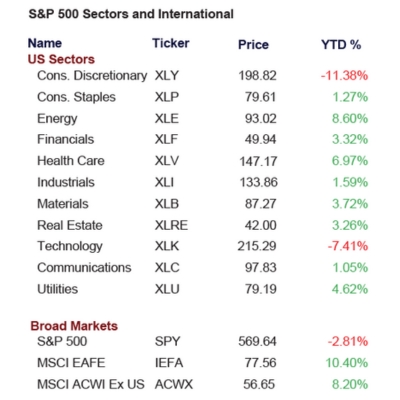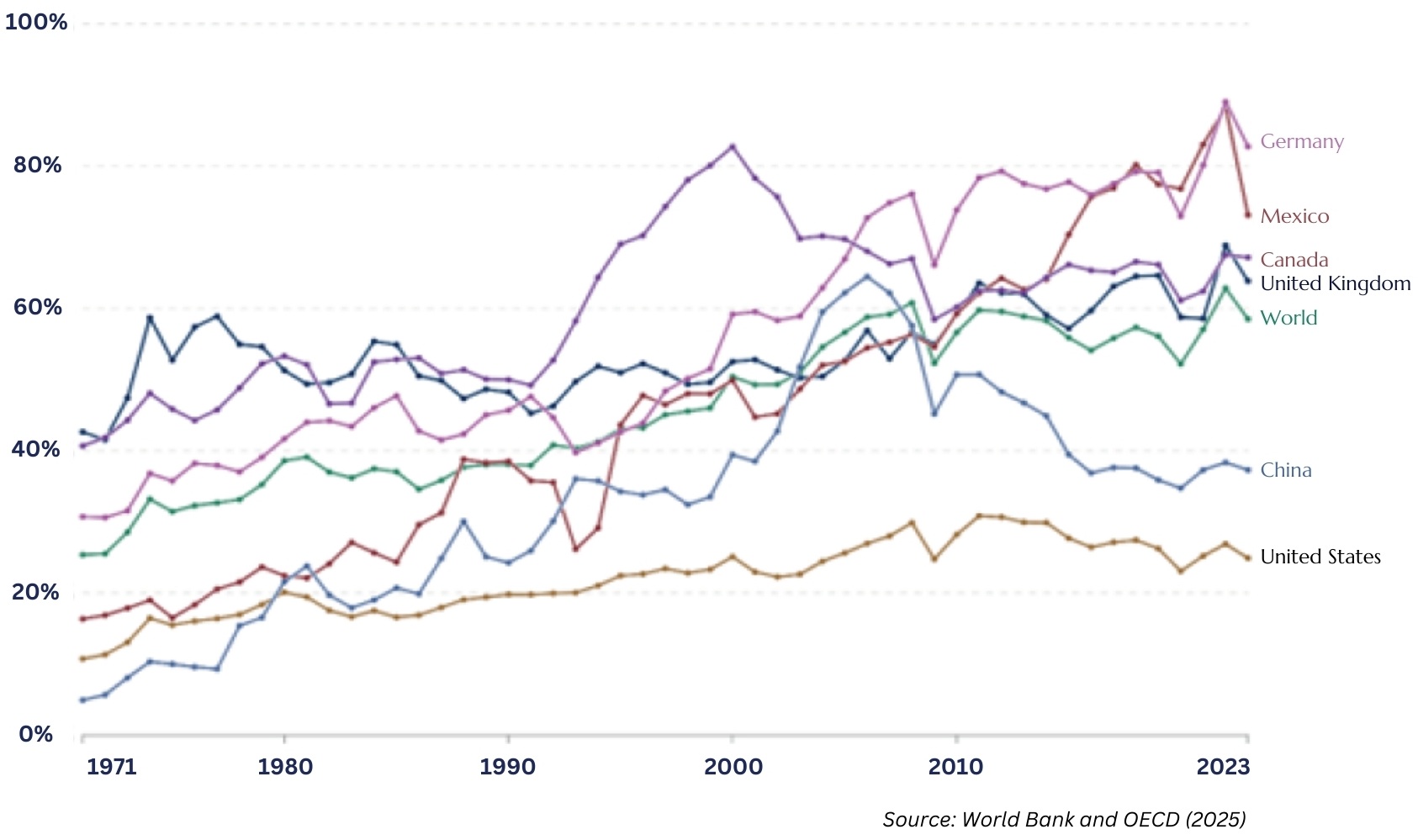Countries Impacted Most by Tariffs
With all the recent volatility concerning tariffs, we believe it is useful to separate what is known and what is unknown. After all, we can’t predict the future. There is a great deal of uncertainty as to what a final tariff structure would look like and more importantly what the ultimate impact on the economy would be. Not only do we not know the ultimate rates, but also we can’t predict the reaction of manufacturers, consumers, governments, etc. However, we do know that trade is less important to the US economy than the rest of the world, and thus our economy should be more resilient. The chart shows the dramatic difference between the US and other countries in terms of trade as a percentage of GDP.
Figure 1: Trade as a share of GDP, 1971 to 2023
Sum of exports and imports of good and services, divided by gross domestic product, expressed as a percentage. This is also know as the “trade openness index.”
Diversification Matters!
 With the recent market action, diversification is back in vogue! As the chart shows, there are only two of the 11 sectors of the S&P 500 that are down on a year-to-date basis, Technology and Consumer Discretion. The S&P 500 is down given the oversized market cap weighting in a few stocks. The FOMO of the past two years of not owning the Magnificent 7 has now been replaced with “thank goodness my advisor told me to own a diversified portfolio.” This trading pattern looks like the classic “risk off” trade where investors sell the riskier sectors that have big gains and buy the underperforming/defensive stocks. Healthcare and utilities are among the best performing sectors. In addition, international stocks, which have underperformed US stocks for the past 3, 5,10, and 20 years, are now outperforming. Time will tell if this trading pattern continues, but we feel obligated to reiterate that diversification matters!
With the recent market action, diversification is back in vogue! As the chart shows, there are only two of the 11 sectors of the S&P 500 that are down on a year-to-date basis, Technology and Consumer Discretion. The S&P 500 is down given the oversized market cap weighting in a few stocks. The FOMO of the past two years of not owning the Magnificent 7 has now been replaced with “thank goodness my advisor told me to own a diversified portfolio.” This trading pattern looks like the classic “risk off” trade where investors sell the riskier sectors that have big gains and buy the underperforming/defensive stocks. Healthcare and utilities are among the best performing sectors. In addition, international stocks, which have underperformed US stocks for the past 3, 5,10, and 20 years, are now outperforming. Time will tell if this trading pattern continues, but we feel obligated to reiterate that diversification matters!
